|
First published: 16/11 2012 Last update: 1/10 2013 (New electronic shut-off and encoded swing-arm shut-off) |
||
|
Stop at will
Here is a collection of shut-off systems that will allow the pilot to stop his engine at will Some of the systems have been available for some time and have been tested by combat pilots. Other systems are brand new and still under development. There are even systems that have not been build or tested yet. They are only ideas on how a pilot activated shut-off could be designed. You are welcome to use these ideas to design a stop at will systems. It is my hope that this collection of solutions and ideas will help to kick start a rapid development of really good pilot activated shut-off systems. Pilot activated shut-off systems are not only about stopping the engine after the match. At the bottom of this page you will find more information on why pilot activated shut-off systems will be critical components in the future /Henning Forbech |
From the 2013 Rule Book:
4.4.9 o: "The pilots must stop their engines and land after the heat is terminated" F2D Rules Guidance F2D Combat Rule 4.4.9.o There is a long on-going debate on 2013 Combat rules on the FAS forum. One place to jump into the debate could be here: 2013 Rules |
|
| | ||
|
Belarusian shut-off with stop at will Last update: 25/3 2013 This device is already a well-known shut-off with pilot activated stop. The system was introduced as a shut-off some years back. But then the designer, Chapeau Nekhay, added an extra spring and demonstrated how the pilot could stop the engine by a hard pull to the line. Many pilots have been using this device during the last season. The ability to stop the engine during tests flight or praxis sessions have made the system very popular. Video from a test flight I regard this design as a very important step in the development of pilot activated shut-off systems. Chapeau Nekhay was the first to demonstrate that a hard pull to the line could be used to stop the engine. The hard pull to the lines can actually be made much higher than the normal pull during a match. This difference can be used to activate a mechanism that stop the engine. The same effect is now also used on swing-arm systems Links: Chornyy Ettore Mancini, Italy, is making and selling a similar shut-off. His version of the "Belarusian shut-off" has bigger springs and steel ball than the original. More info here (pdf) Jacco de Ridder have made an updated version of the "Belarusian shut-off" More information on Jacco's homepage At the World Cup in Bitterfeld, Germany some pilots pulled so hard on the lines to activate the stop function that they actually broke they own lines. This resulted in some dangerous fly-aways! Warning: It is possible to break your lines by pulling extremely hard on the lines. |
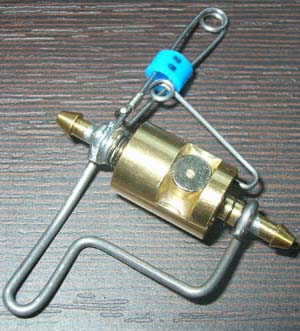
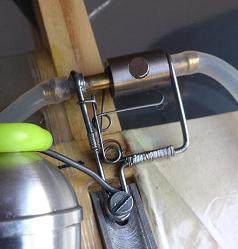
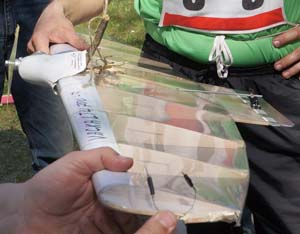
|
|
|
Swing Arm Shut-Off Last update: 16/9 2013 The swing-arm shut-off is also a classic devise. Especial the design by Audrius Rastenis have been very popular. Copies of this design have been made in both metal and plastic by different manufacturers. The swing-arm shut-off has also been equipped with an extra spring. Like the Belarusian shut-off this spring can be released by a hard pull to the lines and will let the pilot stop the engine when he wishes. Here is a description of the Audrius system and some photos of the latest version Swing-arm shut-off with stop function is available from multiple suppliers. Links: Techno Hobby, ViKo, Chornyy, Aerohobby, Yuvenko Encoded stop function: >>> NEW <<<< Some pilots have stopped using the stop-at-will function in competitions because they are afraid it can be activated during a match. Here is a description of a encoded stop function that minimizes the chances of unwanted activation. It is simple to rebuild a swing-arm shut-off with this encoded stop. Other shut-offs may also be redesigned with a similar system to give the pilot the full control of the stop function. Rebuild your old swing arm shut-off: A classis swing-arm shut-off may be rebuilt to pilot activated stop with this special double weight. When the pilot pulls the lines one half of the weight will fall off and the remaining weight will not be enough to keep the shut-off open. More about the "Drop Stop" |
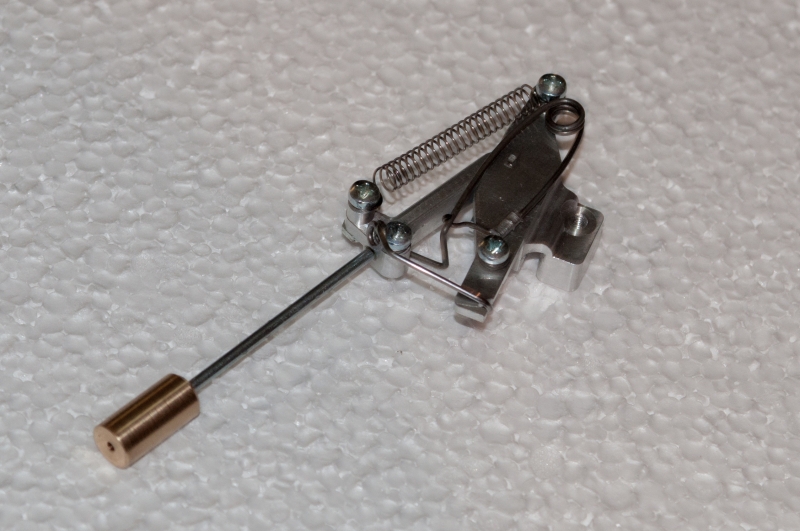 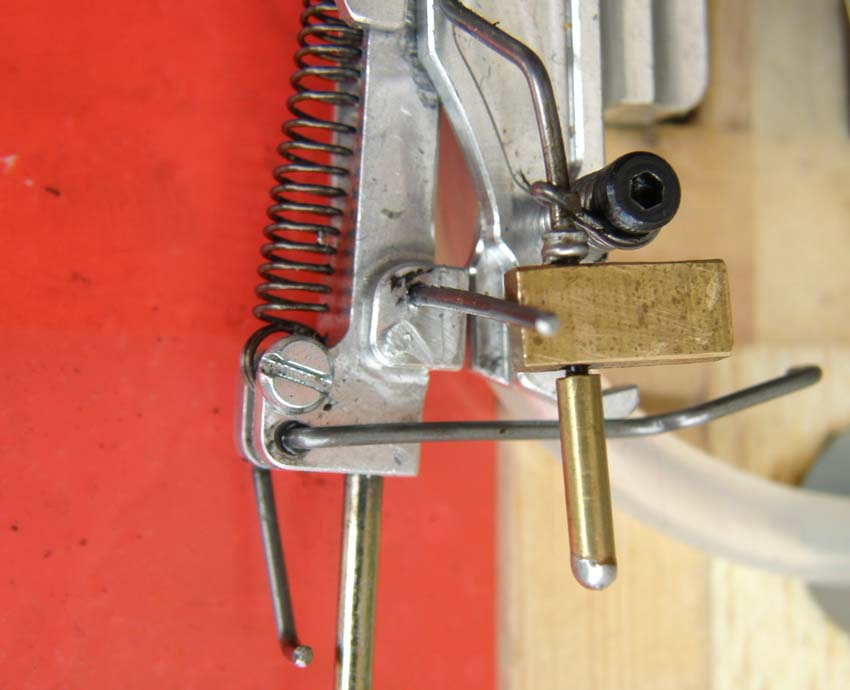 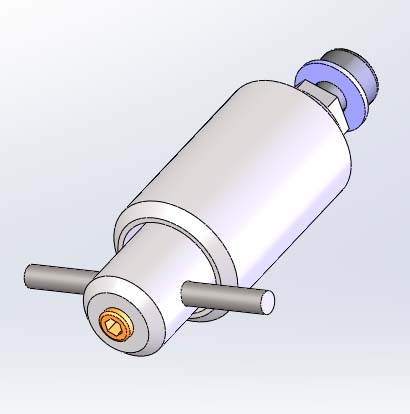
|
|
|
Line Tension Shut-Off Last update: 24/2 2013 Moving Bellcrank A line tension shut-off based on a moving bellcrank can also be rebuild for pilot activated stop. More info and video from the first test flight String-over-the-Wing Line tension shut-off based on "string-over-the-wing" can also be designed for pilot activated stop. More info and video from a concept demonstration in 2008 |
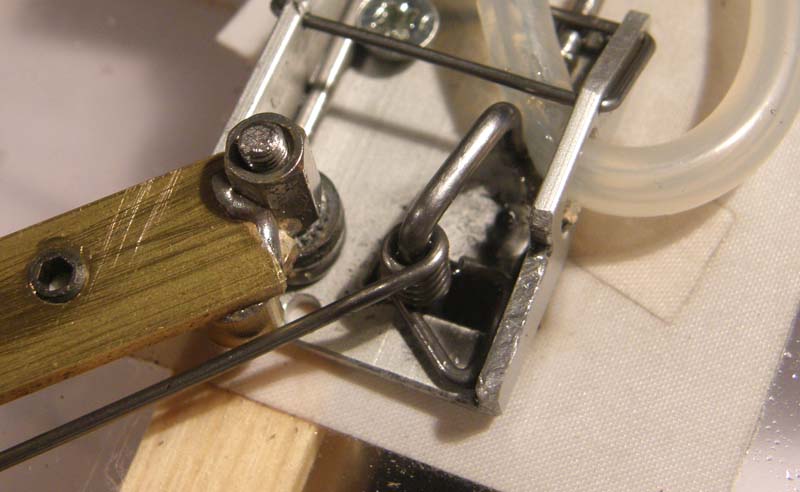
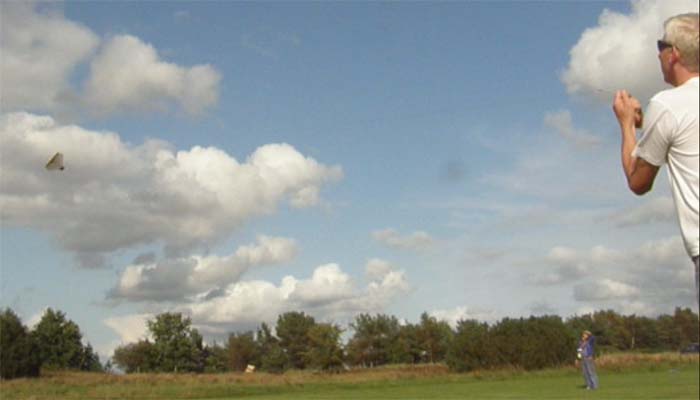
|
|
|
Electronic Shut-Off Last update: 1/10 2013 The electric shut-off systems were born with "stop at will" right from the start. The pilot could stop his engine at any time by using the switch in the handle. The electronic shut-off by Alex Prokofiev is not in production any more but some pilot is still using it. It seems that some pilots try to build a similar system. Follow the attempt on this Russian forum: RC Design Google Translate The Radio Controlled shut-off by Mike Whillance blow up the tank every time it is activated. That is ok for a "anti-fly-away device" but very inconvenient for a pilot activated stop. The mechanic will have to replace the tank and refuel the model at every stop. The Ukrainian shut-off should be better for the pilot activated stop. It only burns a string that easily can be replaced. Electronic shut-off system by Nikolai Necheukhin NEW! Electronic shut-off by Micro Flier Radio A 2.4 GHz radio controled shut-off system for F2D Combat. The fuel is pinch of by a compact servo unit. Developed by Micro Flier Radio in cooperation with Bob Mears. The system is only for stopping the engine on demand. More info on the homepage and on the Yahoo forum Combat-I |
 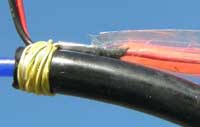 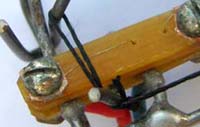 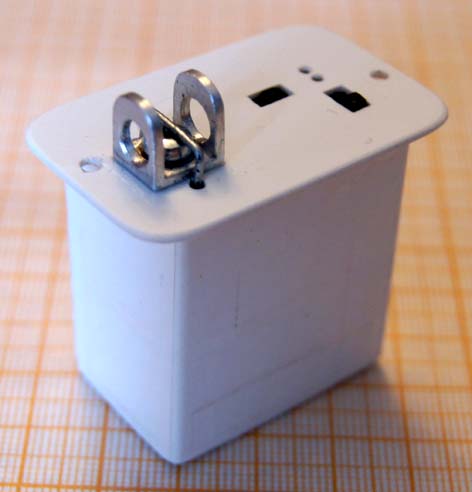 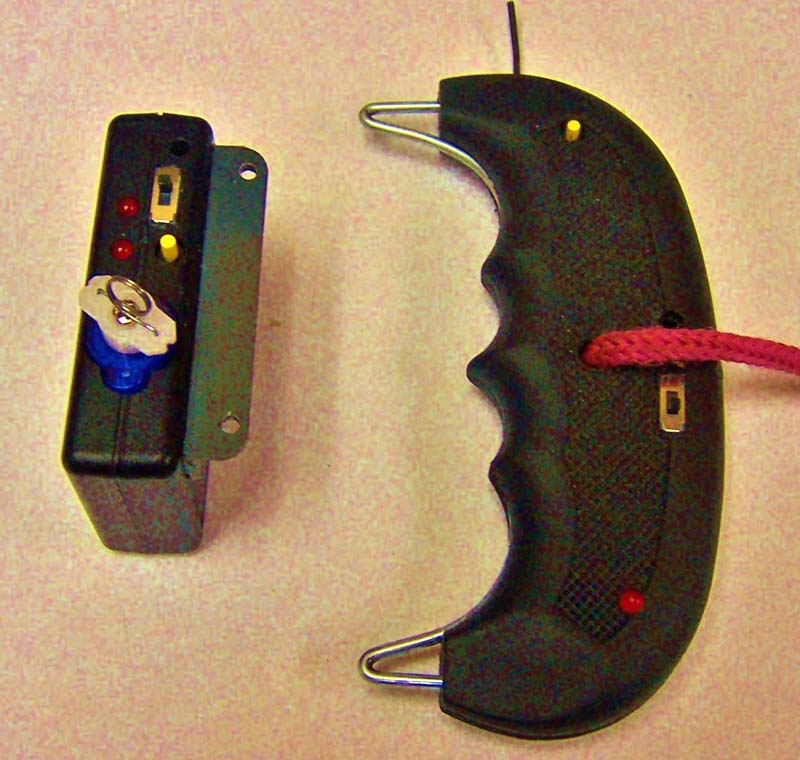
|
|
|
Electromechanical shut-off Last update: 31/5 2013 At the Russian FAS forum Paul Narkevitch is presentating a new interesting shut-off system. It is a combination of a String-inside-the-wing shut-off (anti flyaway device) and a radio controlled servo that allows the pilot to stop the engine at will. More information on the FAS forum (in Russian) Google Translate or at RC Design forum (in Russian) Google Translate See a demonstration on YouTube |
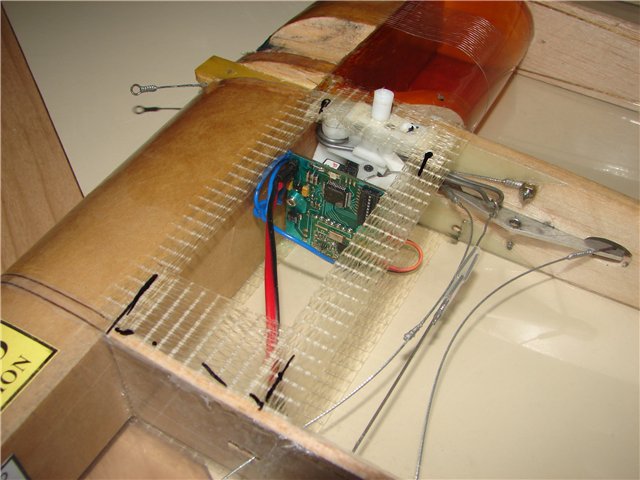
|
|
|
Ball Maze Shut-Off Last update: 18/3 2013 Idea for new shut-off design This new type of shut-off systems are inspired by the Belarusian magnetic shut-off but with all springs and moving parts inside the housing. There are three variations to the basic design. One classic shut-off and two pilot activated systems. Warning: This is only CAD-models that demonstrate some dears on how to make this type of shut-off systems. |
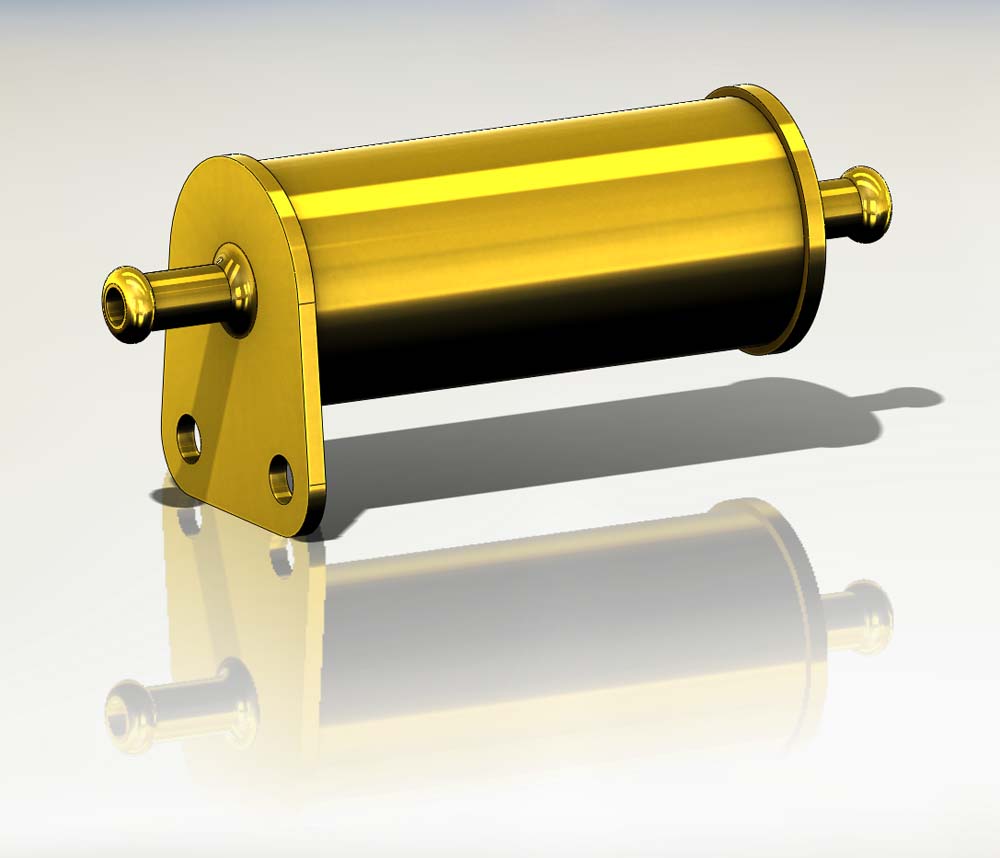 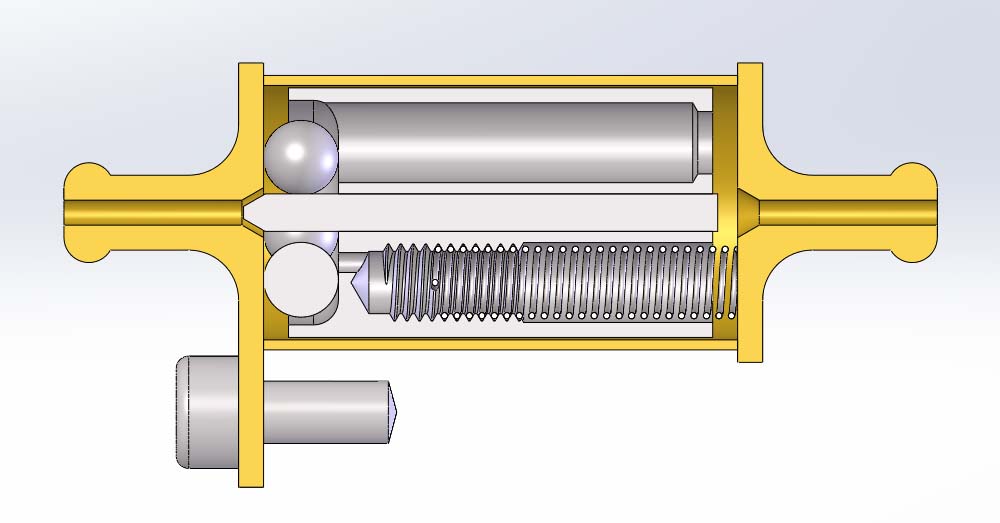 |
|
|
Stop-at-Will spring pinch off Last update: 26/2 2013 A simple spring to pinch off the fuel line. The spring is activated by a Kevlar string connected to one of the lead out wires. Photos from Bitterfeld 2010 |
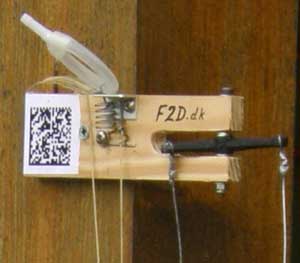 |
|
Pilot activated shut-off systems and new tactics | ||
|
Many pilots are worried on how to stop there engines after a match.
The guidance on the rule let it be up it to the organizer if he will instructs pilots to land or not. Organizers have been invited to publish their intension when they announce an event. Some pilots have even indicated that partition in competitions will depend on how this rule is implemented. Stopping the engine after the match will not be the main reason for developing and using pilot activated shut-off systems The match will end when all streamers are gone and most matches will probably end after a couple of minutes. Only a few matches will continue for the full 4 minutes. In this situation pilots will only tank fuel for 2-3 minutes. The fuel for the last minute will in most situations only be a dead weight that reduces the performance of the model. If you try to fly a model with a full tank against a model with fuel for only one minute you will soon realize the big difference. If you start a bout with fuel for only two minutes you will be able to match you opponent in the first part of the fight. But when you are about to run out of fuel you will be in big trouble. Flying half a minute with an engine that is not running at top speed will make you a sitting duck. You will have to land your model and switch to the spare model. One tactic could be to fly the almost empty model to the ground. This will stop the engine and you will be able to land close to your spare model, but it will also break the propeller and maybe even fill the engine with dirt. This crash landing tactic will set your model out of the fight for some time. This is not a good strategy for winning. With a pilot activated shut-off it will be possible to stop the engine in the air and land the model at the right place. To make fast and reliable landings you will need a good and effective cut-off. It will be these landings during the match that will drive pilots to develop and use pilot activated stop systems. Reliable systems will be as important as strong engines and good models. Stopping the engine after the match will then just be a routine stop. |
Some years ago a strategy based on a reduced amount of fuel was used to win against stronger pilots. Some of the tactics and the special equipment from this strategy may inspire pilots today. "Blitz Krieg" At a competition in Chelyabinsk the 2013 rules was tested. On average the time of matches was 2½ minutes. More spin-off from the Blitz Krieg strategy This video is from the 2012 World Cup in Bitterfeld, Gernamy Stanislav Chronyy is preparing for the final. He is testing the engine and use the pilot activated shut-off to stop the engine after some very short test flights Video from the final |
|
|
Test flights with pilot activated shut-off | ||
|
Permalink: https://www.f2d.dk/stopatwill/stopatwill.htm - Public domain - Spell checking doc |
||